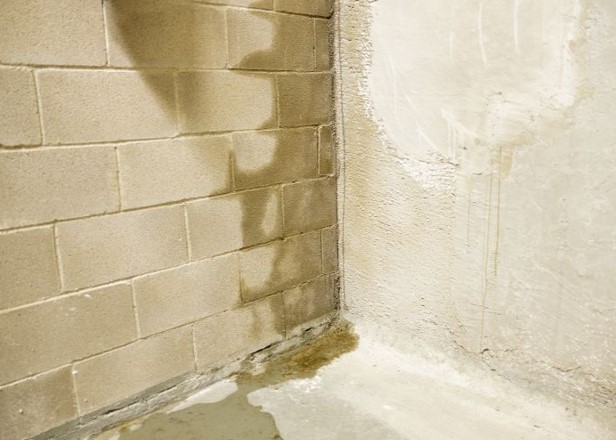Water in your basement can be a homeowner’s nightmare. Whether it’s a minor seepage or a major flood, water damage can lead to mold growth, structural damage, and ruined belongings. This is why basement waterproofing is so important.
Choosing the right method can protect your home, save you money, and give you peace of mind. But which approach is best: waterproofing from the inside or the outside? Let’s learn about your options to help you make an informed decision.
Why Waterproofing Matters
Waterproofing your basement is crucial to maintaining the health and safety of your home. Without proper waterproofing, moisture can get into your basement, causing significant problems over time. Not only does it create a perfect environment for mold and mildew to thrive, but it can also compromise the structural integrity of your house. Investing in basement waterproofing prevents costly repairs and keeps your living space dry and healthy.
Exterior Basement Waterproofing
Exterior basement waterproofing involves creating a barrier outside your foundation to prevent water from entering. This method is often considered the most effective way to keep your basement dry, but it can be more complex and expensive than interior methods. Here’s a closer look at the process and benefits:
- Excavation: The first step in exterior waterproofing is to excavate the soil around your foundation. This allows access to the walls so they can be treated.
- Application of Waterproofing Membrane: A waterproof membrane is applied to the exterior walls. This membrane acts as a shield, preventing water from seeping through the foundation.
- Drainage System Installation: An exterior drainage system, such as a French drain, is often installed to redirect water away from your foundation. This helps to manage groundwater and reduce pressure on the walls.
Pros of Exterior Waterproofing:
- Comprehensive Protection: Stopping water before entering your foundation protects your basement from the outside.
- Prevents Structural Damage: Exterior waterproofing can help preserve your home’s structural integrity by reducing water pressure on the foundation walls.
- Longevity: These solutions are long-lasting and durable, offering peace of mind for many years.
Cons of Exterior Waterproofing:
- Costly and Invasive: The process can be expensive and involves significant excavation, which can be disruptive.
- Weather-Dependent: Weather conditions may delay Exterior work, potentially prolonging the project.
Interior Basement Waterproofing
Interior basement waterproofing focuses on managing water that has already entered the home. While this approach does not stop water from getting in, it effectively deals with moisture that has breached the foundation. Here are the main methods and their benefits:
- Sealants and Coatings: Sealants and waterproof coatings applied to interior walls and floors can help prevent water from entering your living space.
- Interior Drainage Systems: Installing an interior drainage system, such as a sump pump and drain tile, can collect and redirect water out of your basement.
- Dehumidifiers: Using a dehumidifier helps to reduce humidity levels, preventing mold and mildew growth.
Pros of Interior Waterproofing:
- Cost-Effective: Interior solutions are generally more affordable and less invasive than exterior methods.
- Quick Installation: These systems can be installed relatively quickly, minimizing disruption to your daily life.
- Effective Moisture Control: Interior systems manage water and humidity, keeping your basement dry and preventing mold growth.
Cons of Interior Waterproofing:
- Doesn’t Address the Source: Interior waterproofing manages water after it has entered your home, rather than stopping it at the source.
- Maintenance Required: Interior systems, like sump pumps, require regular maintenance to ensure proper operation.
- Potential Limitations: In severe cases of water infiltration, interior methods may not be sufficient on their own.
Choosing the Right Approach
Deciding between interior and exterior basement waterproofing depends on your specific situation. Interior solutions like sealants, sump pumps, and dehumidifiers might be sufficient if you’re dealing with minor moisture issues. These methods are generally more affordable and less invasive, making them ideal for managing moisture and small leaks. However, they primarily address water after it has entered your basement rather than stopping it at the source.
On the other hand, if you have significant water infiltration or want the most comprehensive protection, exterior waterproofing is likely the better choice. This method involves creating a barrier on the outside of your foundation, preventing water from entering in the first place. While it is more costly and disruptive due to the excavation required, exterior waterproofing provides long-term, durable protection and can help preserve the structural integrity of your home.
Conclusion
Both interior and exterior basement waterproofing have their advantages and drawbacks. Understanding these can help you choose the best approach for your home. Protecting your basement from water damage is essential for maintaining a safe, healthy, and comfortable living environment.
If you’re looking for expert advice and professional basement waterproofing services, look no further than Basement Waterproofing DC. Our experienced team can assess your needs and provide the best solutions to keep your basement dry and secure. Contact us today to schedule a consultation and safeguard your home against water damage.

